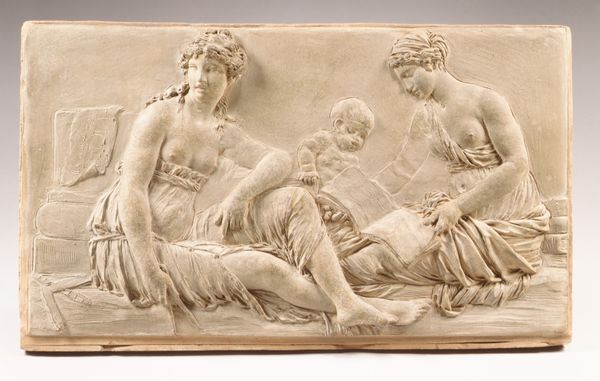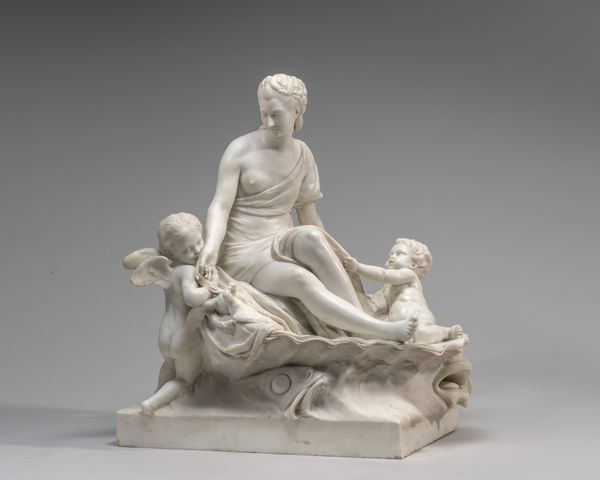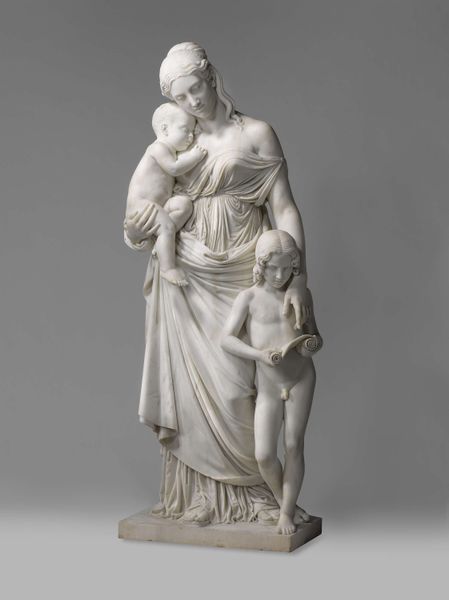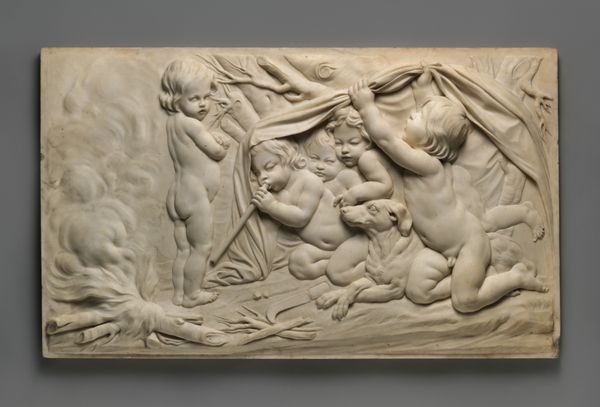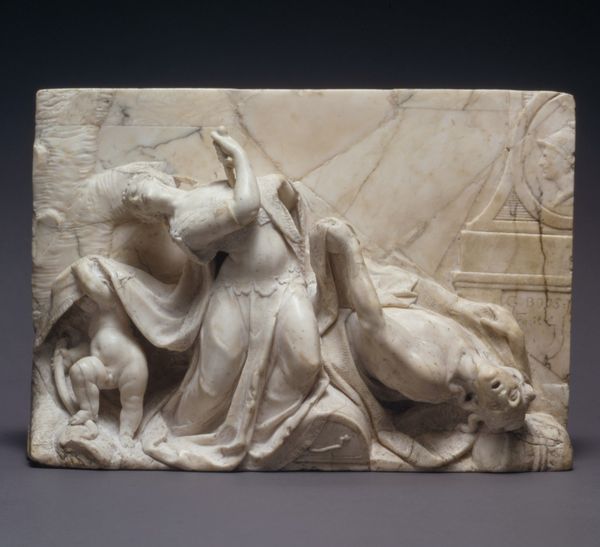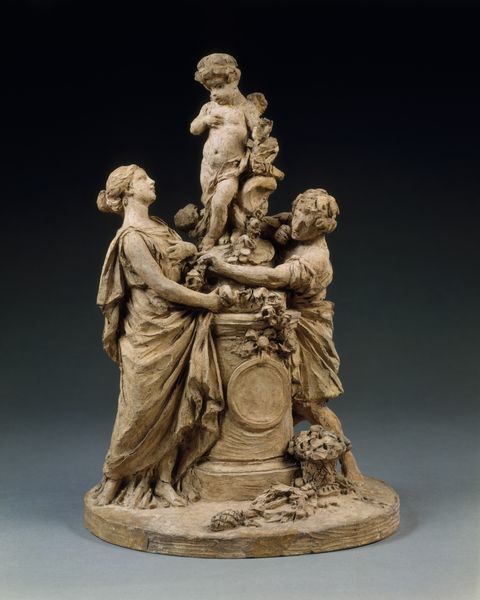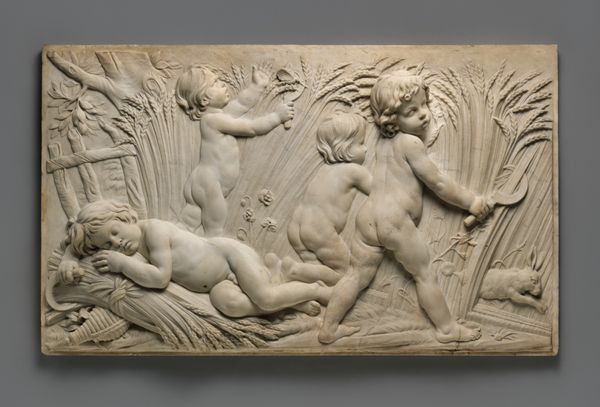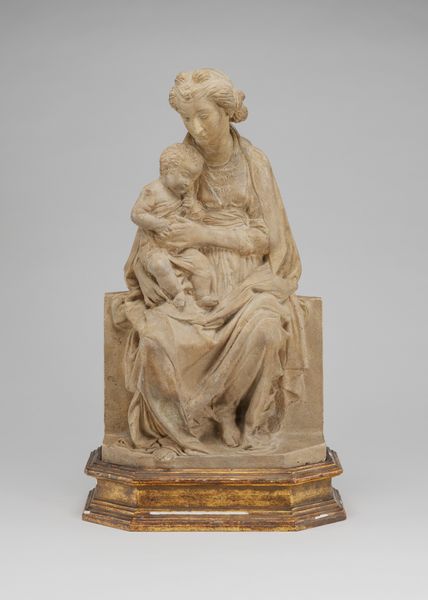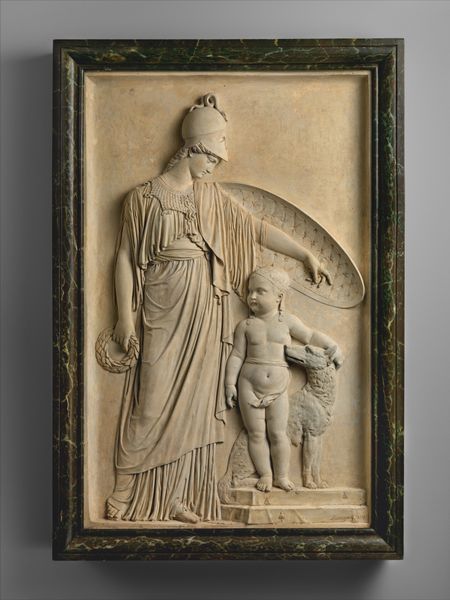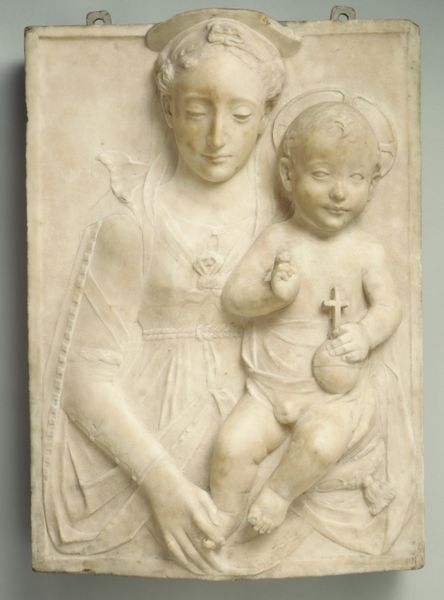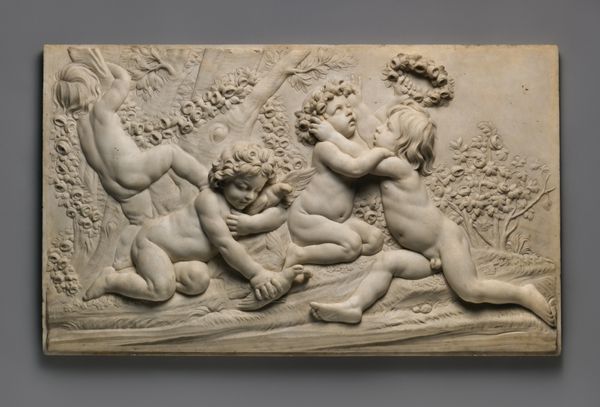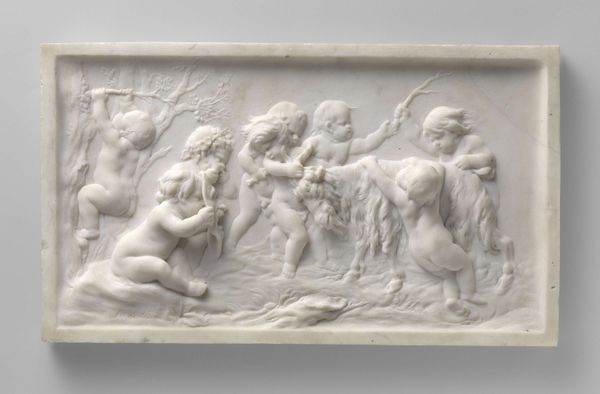
Dimensions: 8 3/4 x 15 1/4 in. (22.2 x 38.7 cm.)
Copyright: Public Domain
Curator: Oh, this piece exudes such a sense of tender domesticity, doesn’t it? Editor: It’s intensely…beige. I mean, I know it’s marble, but it’s so uniformly…vanilla. It’s like a study in sculpted monotony. Curator: Ha! Well, let’s not dismiss Clodion’s "Music" just yet! Carved somewhere between 1775 and 1795, this relief captures a beautifully intimate moment. It’s currently housed at The Met. What details do you notice beyond the hue? Editor: Right, Clodion. Well, I see women and a child with, what is that, sheet music? It looks almost clumsily held. But the fabric, the drapery, the sheer amount of labor needed to achieve that—that’s undeniably impressive. You can almost feel the weight of the material in their laps. Curator: Exactly! The tactile quality is remarkable. Look at the expressions: one woman is holding the musical instrument, another points to what appears to be music for the babe. I interpret a kind of lineage of art-making that moves between them. Clodion is offering us not just an image but a narrative about creation. Editor: That's a sweet idea, but it doesn't mask the material reality. Marble quarries, the transportation, the highly skilled artisans… Who were they? We only celebrate the artist, Clodion, while erasing the labor of everyone who touched this thing before it became "art." Curator: A fair point, though the dedication to craft should be noted as part of Clodion's artistry, don't you think? Consider, also, that for the time this artwork celebrates feminine intellect, family, creativity! Perhaps a small act of revolution of its own. It makes one consider art as love-made manifest. Editor: I suppose if we see the figures as allegorical rather than individuals, we get a hint about the status that marble confers to those depicted, real or not. Ultimately though, it’s still rock. Glorified rock. Curator: Rock given a voice. Perhaps not the loudest voice, but one whispering stories nonetheless. Editor: And those stories are steeped in extraction, production, and class. But it *is* lovely, in its way. Curator: I find something moving about bringing everyday people, themes of music making into these immortal stone forms, in this time period. I agree with you both, strange as it is.
Comments
No comments
Be the first to comment and join the conversation on the ultimate creative platform.
